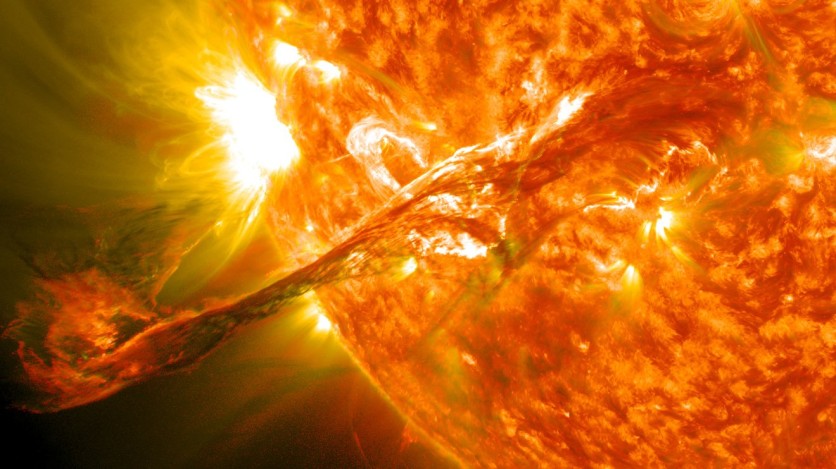NASA scientists are gearing up to study the effects of fierce solar storms at Mars, capitalizing on a rare opportunity presented by the Sun's peak activity this year.
In the coming months, two of NASA's Mars spacecraft will delve into the potential impacts of solar flares, which are massive eruptions on the Sun's surface, on robots and future astronauts on the Red Planet.

Taking On Solar Storms on Mars
The Sun is entering a heightened activity known as solar maximum, which happens approximately every 11 years.
During this phase, the Sun becomes more prone to emitting solar flares and coronal mass ejections, which release radiation into space, collectively known as solar storms.
Mars lacks a global magnetic field, unlike Earth, rendering it more susceptible to the Sun's energetic particles. The current solar maximum presents an excellent opportunity to study the intensity of solar activity at Mars and understand the potential risks radiation poses to human explorers.
Scientists are particularly interested in observing a major solar event at Mars this year to gain insights into solar radiation's effects before sending astronauts to the planet.
The MAVEN (Mars Atmosphere and Volatile EvolutioN) orbiter, managed by NASA's Goddard Space Flight Center, plays a crucial role in this endeavor. Shannon Curry from the University of Colorado Boulder will lead this ambitious mission.
MAVEN collects data on radiation and solar particles from a high vantage point above Mars, while NASA's Curiosity rover provides ground-level insights through its Radiation Assessment Detector (RAD).
NASA noted that RAD data has been instrumental in understanding radiation's effects on Mars' surface and assessing potential radiation shielding for future astronauts using natural features like caves, lava tubes, or cliff faces.
When MAVEN identifies significant solar events, it notifies the Curiosity team, enabling real-time monitoring of changes in radiation levels using RAD. This collaboration yields detailed data on particle interactions with Mars' atmosphere and surface.
NASA also noted that MAVEN serves as an early warning system for other Mars missions, alerting them to rising radiation levels and enabling protective measures to safeguard electronics and communication systems from solar flare interference.
Furthermore, the space agency expects that studying solar maximum could provide insights into Mars' transformation from a warm, wet world to its current frozen desert state.
Martian Dust Storms
Mars experiences intense dust storms, particularly during solar maximum when it orbits closer to the Sun. This heating of the atmosphere triggers massive dust storms that can blanket the planet.
These storms may contribute to water loss from Mars' atmosphere, contributing to its transition from a habitable world to its current arid condition.
Scientists are intrigued by the possibility of a global dust storm coinciding with a solar storm, which could shed light on Mars' atmospheric dynamics and water loss mechanisms.
This solar maximum coincides with Mars' dustiest season, presenting an opportune moment to explore these phenomena.
"For humans and assets on the Martian surface, we don't have a solid handle on what the effect is from radiation during solar activity," said Shannon Curry of the University of Colorado Boulder's Laboratory for Atmospheric and Space Physics.
"I'd actually love to see the 'big one' at Mars this year - a large event that we can study to understand solar radiation better before astronauts go to Mars."
Related Article : NASA Unveils New Martian Crew for Its Next Simulated Mars Journey

![Apple Watch Series 10 [GPS 42mm]](https://d.techtimes.com/en/full/453899/apple-watch-series-10-gps-42mm.jpg?w=184&h=103&f=9fb3c2ea2db928c663d1d2eadbcb3e52)



